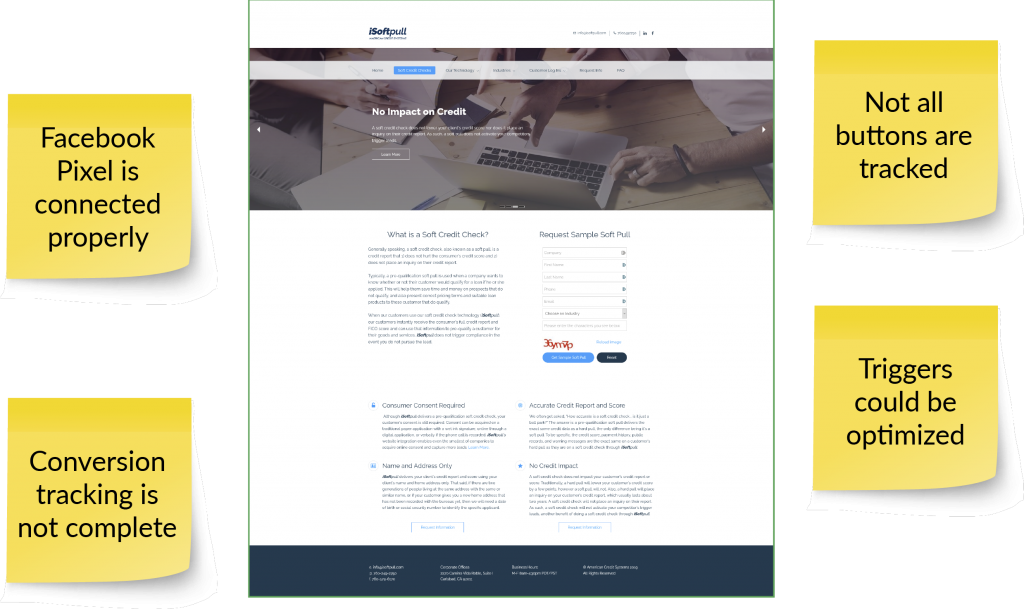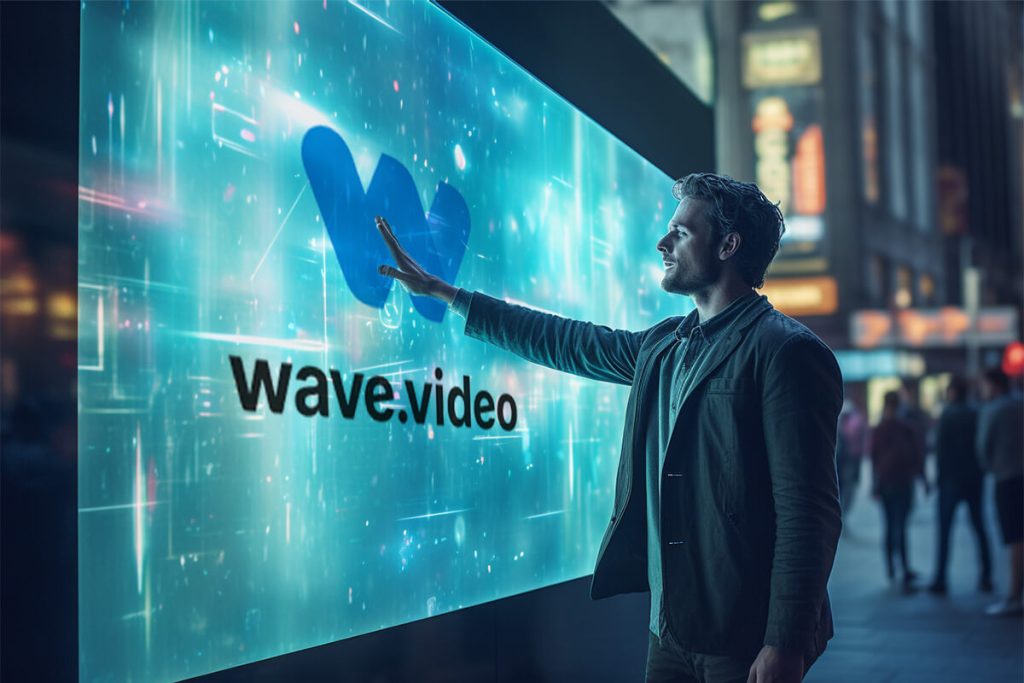Landing page tracking – did you just build a landing page and are now staring at an analytics dashboard wondering what to do? Do you just want to track the most essential behaviour on your landing page? Are you in need of a quick and dirty tracking setup you can forget about and not be worried for the integrity of your data? You’ve come to the right place!
Build, Measure, Learn – or Is It the Other Way Around?
Eric Ries claims that the single asset that differentiates between startups is the speed at which they learn. For this purpose he constructed a tool he called the build-measure-learn feedback loop. He says: “All successful startup processes should be geared to accelerate that feedback loop’.”
I have no idea, if you are a startup or not – but the idea is potent. The main learning point is in the way it is to be carried out. The sequence, build first → then measure → then learn, is accurate in the way it is finally executed. Of course – you must first build what you want to measure. But what’s interesting about the idea is the fact, that it should be designed in reverse:
- Think about what you need to learn,
- then decide how you will measure it,
- then build it.
If you are working on a complex project, a new startup or a new product, this takes a lot of creativity and work. But lucky for you (and for us) the problem has already been solved for landing pages.
Don’t get me wrong – designing landing pages is not a simple task. But the way landing pages function, the psychology behind it, that is well known and researched. Let’s check out the most obvious approaches to solving the problem of measuring landing page performance.
What Should You Strive to Learn From a Landing Page Tracking
Every landing page is different, but they are all also very similar in the way they function as building blocks in their users’ journey.
Let’s adopt the next model of the decisions a user has to make on his journey:
- Attention
The decision to focus attention on something happens below the conscious level. That’s why cheap and sleazy sales techniques will work no matter how we resent them. - Relevance
The decision here is: “Is it relevant?”. This happens almost instantaneously. - Interest
Here the user asks: “Does it interest me?” - Evaluation
User: “Is this valuable for me?” - Action
“Am I willing to take action?”
- Attention
So what do you need to do when building landing pages? You need to collect learning points about all of the 5 decisions above.
For example, you could find some metrics which would represent each step. Then you could record, compare and test various landing page designs and use those metrics to make business decisions.
These metrics could be:
Attention: click
Relevance: 5 seconds on page
Interest: 15 seconds on page
Evaluation: scroll & click
Action: conversion
Measuring Attention
Attention in landing page tracking has to do with all the traffic sources that drive users to your site. You would want to understand the value of bits of information that attracts users to click a link to your site. Checking ad CTR, SEO performance, engaging social content … How many people see it and how many people click?
Measuring Relevance
When measuring relevance in landing page tracking you’ll want to understand how much of your traffic finds the page useful and relevant. We usually go for a 5 second timer – this is the amount of time a typical user needs to decide if it is worth to spend more energy on the page or not. If the user leaves before that, he or she is clearly finding the page totally irrelevant. It is an important milestone.
There is one issue here though – typically in the first 5 seconds no action is taken on the page by the user. So what should we even measure? And what if the user stays on the page for 20 seconds and leaves without any engagement? Isn’t that a bounce? Luckily all of this can be solved with Google Tag Manager.
Implementation
Basically you need a 5 seconds timer that triggers an interaction type event. Since implementing this event will decrease your bounce rate it is typically called the ‘adjusted bounce rate’. There’s plenty of instructions about how to do that. Read this Simo Ahava’s blog or watch this MeasuresSchool’s video.
Possible Gains
There are many elements which influence the evaluation of relevance in the user. Start here:
- Does the page continue the story of the ad? Does it have the same scent? (read this CXL’s blog about the idea of ‘scent’)
- Is it clear WHY the user should stay on the page?
- Is it clear WHO is behind the page?
- Is it clear WHAT is the page offering? (always communicate in a super-clear manner)
- Is the offer trustworthy? (think about elements building credibility)
- Is it clear what to do next? (is the flow of the page logical, in copy and in design?)
Measuring Interest
Measuring interest in landing page tracking is basically gaining understanding to what degree your page keeps the user interested and engaged. We typically go for measuring 15 seconds visit duration here. There are some who advocate for a combination of scroll + duration, but we like to keep this simple.
Implementation
Go about this in the same way you’d have implemented the previous measurement. Read this Simo Ahava’s blog or watch this MeasuresSchool’s video.
Possible Gains
How do landing pages lose users before 15 seconds pass? By losing their focus. So think about flow here. If the ability to perceive page flow was a minor factor behind deciding on page relevance, it is the main engine which drives interest.
- What key tasks are users here to do & is the page serving this?
- Is the page confusing? (Too many links, too many options … )
- Is the value of the page clearly communicated?
- Is the page design clear? Is the CTA emphasized? Contrast, visual cues, white space around elements, font size …
Measuring Evaluation
Your product/service probably has a bunch of features which are valuable to your customers. But in the era of increasingly shorter attention spans, it is more and more important that you communicate exactly the right benefits at the right time to the right segment of your users. Observing metrics of evaluation in landing page tracking enables you to understand what specific information your users need to make a final decision.
To do this we measure scroll and engagement events:
- Scroll to the main CTA section
- Scroll to the end of a page
- Clicks (videos, download buttons, important page links … )
Implementation
To measure if the users have scrolled to the main CTA section this Simo Ahava’s method could be used. The method triggers an event when a desired element becomes visible – obviously you would want to set this element to be your primary CTA button.
To measure scrolling to the bottom we use this method.
Possible Gains
- Is it easy to understand, that the page continues below the fold? Does the design invite the visitors to scroll? Does this apply to all devices?
- Which pieces of content deliver the most? What is the conversion rate of the users who click on video vs. the rest?
Measuring Action
This is the most straightforward measure. You are probably doing it already. Basically you are just counting conversions here.
Implementation
Read our blog here.
Possible Gains
- Are the incentives strong enough? Which CTA text works the best?
Key Takeaway
When building lading pages, have learning in mind. There is no sense in building something, that does not provide insights when doing your landing page tracking. The speed with which you can make iterations and adaptations is one of the rare factors you have absolute control of – don’t throw it away!
This blog is inspired by the work of the talented Maša Crnkovič. Check her out!
Get some inspiration on the Principle Of Reciprocity In Landing Page Design and choose your favourite way to capture your customer’s attention.
Would you like to work with experts in the field? Google Tag Manager is one of the tools that we specialize in. Don’t hesitate to get in touch!
CHECK IF YOU ARE COLLECTING WHAT YOU SHOULD WITH THIS FREE TRACKING AUDIT REPORT
A Google Analytics & Tag Manager expert will check your tracking setup and deliver at least
7 ACTIONABLE TIPS FOR FREE.












